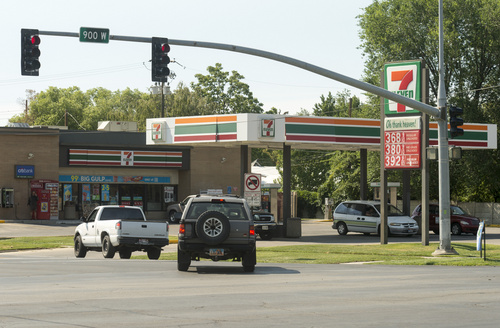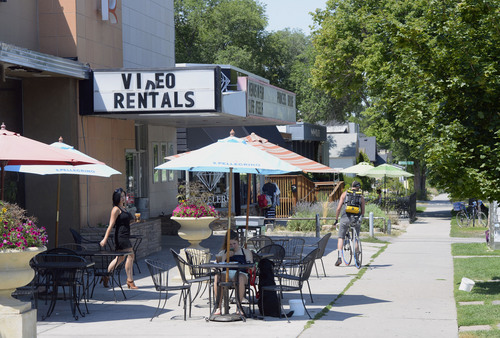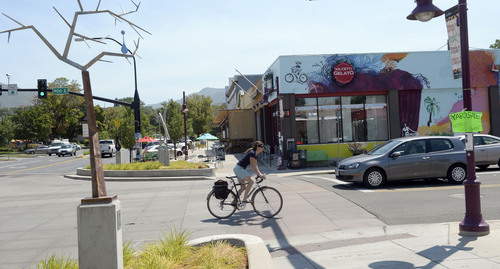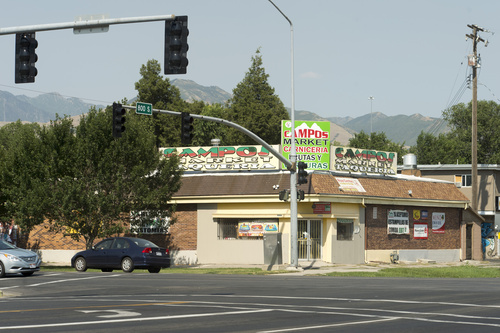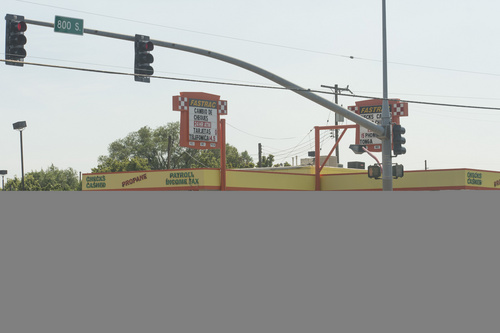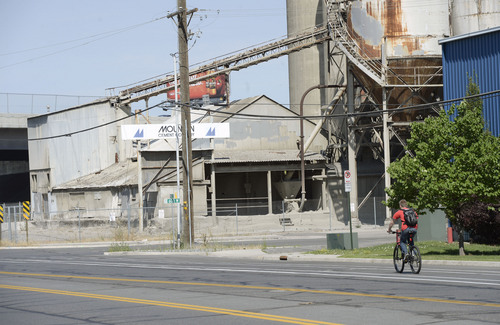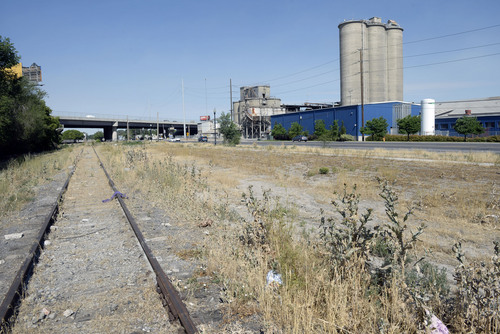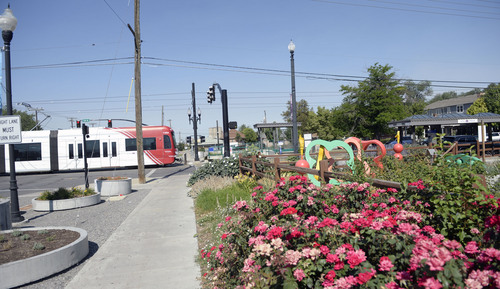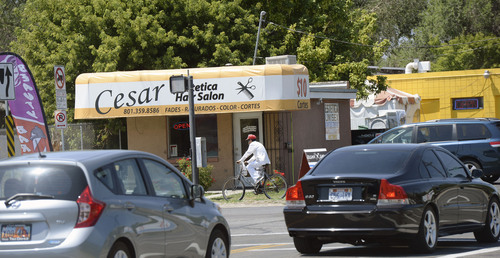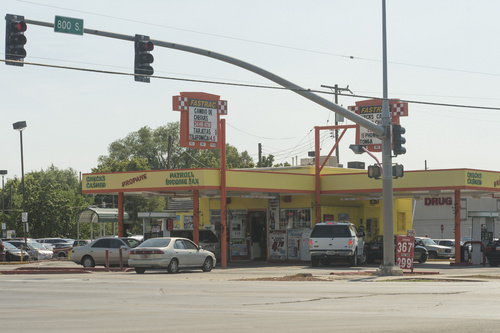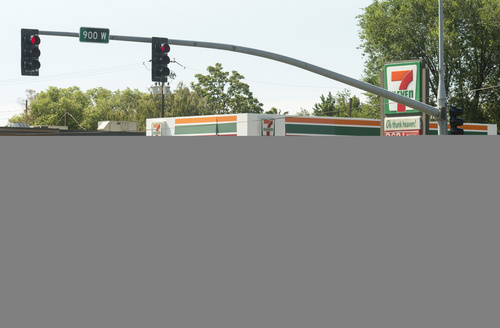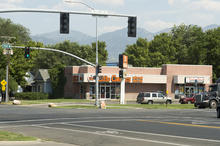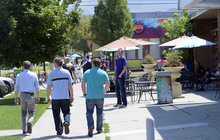This is an archived article that was published on sltrib.com in 2014, and information in the article may be outdated. It is provided only for personal research purposes and may not be reprinted.
Imagine hopping on a bicycle, bus or streetcar at Salt Lake City's trendy 900 East and 900 South neighborhood and heading west to 900 West and 900 South, another cool but distinctly different district.
It's not a new notion but one that is being dusted off at City Hall. The idea is to turn the 900 South corridor, and all of its neighborhoods, into a thriving thoroughfare of commerce, culture and community.
The concept gained momentum after a group of designers, anthropologists and urban planners — called the Social Agency Lab — delivered to Salt Lake City a 10-page unofficial report that offered ideas about the corridor and its six distinct neighborhood commercial districts. They are identified as 900 East, Liberty Park (500 East), State South (State Street), Ninth Central (200 West), the Granary (500 West) and 900 West, which stretches to include the 800 South retail district.
Developing 900 South as a boulevard is hardly a new topic but the planning group's observations are getting a close look from City Hall, said Eric Shaw, director of community and economic development, who invited the group to Salt Lake City. "The plan was: How do we apply the things that made 900 East and 900 South successful to these other neighborhoods?"
Improving 900 South as an east-west thoroughfare makes sense, said City Councilwoman Erin Mendenhall, whose District 5 includes 900 South and 900 East. "It has a lot of ingredients that make the perfect corridor for thriving local businesses and walkable neighborhoods."
The city can help those unique but small commercial areas "amplify" their successes, she said, without homogenizing them.
"It's a bootstraps situation. These districts currently aren't being helped much by any organization outside their neighborhood," Mendenhall said. "We can help them take their success to a new level."
Ninth South is one of only a few corridors connecting the city's west and east sides, said Councilman Kyle LaMalfa, who represents Glendale and Poplar Grove. An enlivened 900 South would be good for the west side's transportation needs and bring more people and investment to the communities west of Interstate 15.
"Ninth South is representative of the greatest parts of Salt Lake City," he said. "And it's in one line."
Commercial nodes along the street have sprung up organically, rather than through city funding efforts, LaMalfa noted. But the municipality can nurturethose neighborhoods by fostering activities and celebrations at those locales along with branding and marketing.
"This is the opposite approach we take with the Redevelopment Agency," he said, referring to costly infrastructure improvements and loans made to large redevelopment projects.
It's also unlikely for a streetcar to be coming to 900 South anytime soon. But bike lanes or circulator buses could.
Already in the planning stages is an eastward extension of the "9 Line" — a bicycle and walking path from Redwood Road to the Jordan River along an abandoned rail line.
"Many members of the City Council are interested in the corridor, regardless of a streetcar," Councilman Luke Garrott said. "We want to enhance what is already there and build upon what people in those neighborhoods want."
Such a boulevard would be a transportation boon as well as a cultural connector.
Although "shards" of various plans address the concept of a 900 South corridor, Garrott said, no comprehensive proposal exists for the route. "We need to come up with a plan that is backed up by a commitment to implement it."
So someday Salt Lakers may stop jawing about Ninth and Ninth and start buzzing about Ninth to Ninth.
Council forum
The Salt Lake City Council could begin discussing the 900 South corridor July 29 as it revisits its capital improvements projects budget at 2 p.m. in Room 326 at City Hall, 451 S. State.


